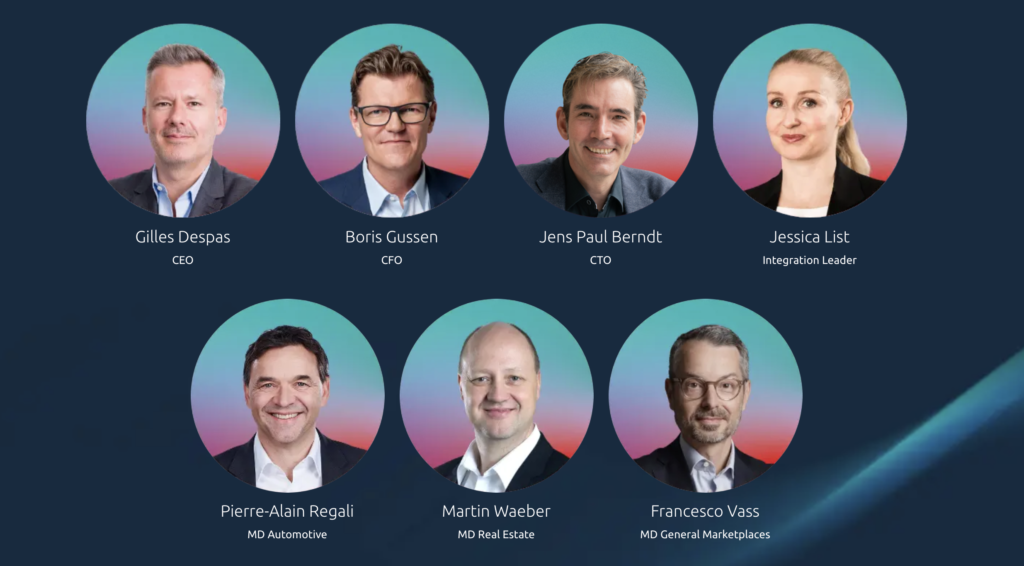The Swiss online marketplace Ricardo is setting new standards for a seamless second-hand trade, a key element in promoting the circular economy, with the integration of a free AI technology. With the launch of “Ricardo AI” on Android and iOS apps as well as the website, searching, finding, buying, and selling items has become more intuitive and faster than ever before. An image of a product is all it takes for the AI to suggest similar items on Ricardo for purchase or to create automatically generated listing descriptions for selling the product.
Originally born from a hackathon idea, Ricardo began developing and integrating artificial intelligence in its buying and selling processes at the start of 2024. Since summer, “Ricardo AI” has enabled even faster product search and discovery. Recently, the AI technology has also become available for efficient selling in both Android and iOS apps, as well as in the web version. With AI-powered tools, such as an advanced image recognition solution, Ricardo is simplifying the buying and selling experience for its users, marking another important step toward sustainable consumption and promoting the circular economy.
Lightning-Fast Searching, Intuitive Shopping
Ricardo AI makes it easier for customers to browse listings, providing an intuitive shopping experience without complex search queries. Users can simply scan a product with their phone camera or upload an existing image. Ricardo AI then identifies identical or similar items currently available on Ricardo in just seconds. Or, if users have already discovered an interesting product on Ricardo, a click on the AI button in the listing will display further similar suggestions. This visual product search achieves high precision thanks to a complex image recognition technology.
Efficient Selling through Smart Listing Descriptions
AI also makes selling on Ricardo significantly easier. Anyone wishing to sell an item can scan it directly with their phone camera or upload an existing image. Ricardo AI then finds comparable listings on Ricardo, suggests market-appropriate prices, and provides automatically generated titles and descriptions for the listing. This AI feature offers an efficient and convenient selling process, enabling Ricardo users to give unused items a second, sustainable life as quickly as possible.
Positive User Feedback
Within the first few weeks after launch, Ricardo’s AI has already gained great popularity among users. Currently, a third of the listings created through the app are generated with the help of “Ricardo AI.” About 2 percent of all Ricardo search queries involve a visual search (AI product search or display of similar items), and so far, approximately 30,000 users have used the AI technology to search for or sell a product.
Continuous Optimization of Features
At Ricardo, a dedicated team of software developers, designers, and product managers has been working intensively for over six months on the development and ongoing optimization of “Ricardo AI” to continuously improve the functionality of the AI and tailor it to users’ needs. “The easier it is to buy and sell used items on Ricardo, the more sustainable behavior will become second nature in Switzerland,” says Francesco Vass, Managing Director of Ricardo. “With Ricardo AI, we’re making the trade of unused second-hand items as simple as possible, and we’re convinced that we’re making a further important contribution to promoting the circular economy.”
Press Contact

Mojca Fuks
Senior Corporate Communications Manager & Media Spokesperson
+41 76 220 59 89
About Ricardo
Founded in late 1999 in Baar (ZG), Ricardo has grown over the past 25 years to become one of the most popular online marketplaces for secondhand goods in the Swiss e-commerce market. Ricardo is part of SMG Swiss Marketplace Group AG.
www.ricardo.ch
About SMG Swiss Marketplace Group AG
SMG Swiss Marketplace Group AG is a pioneering network of online marketplaces and an innovative digital company that simplifies people’s lives with forward-looking products. SMG Swiss Marketplace Group AG provides customers with the best tools for their life decisions. Its portfolio includes Real Estate (ImmoScout24, Homegate, Flatfox, Immostreet.ch, alle-immobilien.ch, home.ch, Publimmo, Acheter-Louer.ch, CASASOFT, IAZI), Automotive (AutoScout24, MotoScout24), General Marketplaces (anibis.ch, tutti.ch, Ricardo), and Finance and Insurance (FinanceScout24, moneyland.ch). The company was founded in November 2021 by TX Group AG, Ringier AG, La Mobilière, and General Atlantic.
www.swissmarketplace.group

